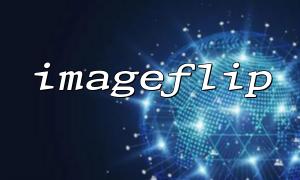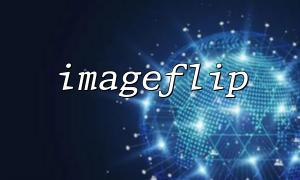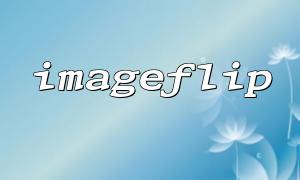In PHP, the imageflip function is a practical tool for flipping images. It can be flipped by manipulating the pixel data of the image and can process images in different formats such as JPG, PNG and GIF. However, different image formats will have some differences when flipping because their underlying image processing and compression mechanism are different. This article will introduce how the imageflip function handles these three common image formats and how it is handled differently when flipping.
PHP's imageflip function is used to flip images vertically or horizontally. It accepts two parameters: image resource and flip mode. There are four types of flip modes:
IMG_FLIP_HORIZONTAL : Flip the image horizontally.
IMG_FLIP_VERTICAL : Flip the image vertically.
IMG_FLIP_BOTH : Flip the image horizontally and vertically at the same time.
JPG Pictures
JPG (JPEG) format is a lossy compression format that is often used for the storage of photos and complex images. When processing JPG images, imageflip will first load the image into memory and flip the pixels. Since JPG is a lossy compression format, the flip operation does not affect its compression quality, because the flip is based on image data in memory.
<?php
$image = imagecreatefromjpeg('https://gitbox.net/path/to/your/image.jpg');
imageflip($image, IMG_FLIP_HORIZONTAL);
imagejpeg($image, 'flipped_image.jpg');
imagedestroy($image);
?>
Note: Lossy compression may be applied again when saved to JPG format after flip, so there may be a slight loss of mass when saved.
PNG Pictures
PNG format is a lossless compression format suitable for storing images with transparent backgrounds. When processing PNG images, imageflip also loads the image into memory and flips it. Since PNG is a lossless compression format, the flip operation does not affect the quality or transparency of the image.
<?php
$image = imagecreatefrompng('https://gitbox.net/path/to/your/image.png');
imageflip($image, IMG_FLIP_VERTICAL);
imagepng($image, 'flipped_image.png');
imagedestroy($image);
?>
Note: The transparency of the PNG image (alpha channel) remains the same, so the transparency effect is not lost when flipping the PNG image.
GIF Image
The GIF format is another lossless compression format that supports animation, especially for small images and simple animations. When processing GIF images, imageflip flips according to each frame of the image. If it is an animated GIF, flip will be applied to each frame, so the flipped GIF image will retain the animation effect.
<?php
$image = imagecreatefromgif('https://gitbox.net/path/to/your/image.gif');
imageflip($image, IMG_FLIP_BOTH);
imagegif($image, 'flipped_image.gif');
imagedestroy($image);
?>
Note: When the GIF image is flipped, the animation is not lost, but you need to make sure that every frame of the image is flipped correctly.
JPG : The flipped image operates based on pixel data in memory, but due to JPG using lossy compression, it can lead to a slight loss of mass when saving.
PNG : The image quality is not lost when flipped, and the transparency is retained, suitable for situations where the original image quality needs to be maintained.
GIF : When flipping, if it is an animated GIF, each frame will be flipped, retaining the animation effect, suitable for dynamic images.
When the imageflip function processes images in different formats, the main difference lies in the compression method and animation support of the image. JPG may lose some quality due to lossy compression, while PNG and GIF images do not lose quality, and the GIF format can also maintain its animation effect. When using imageflip , selecting the appropriate image format and understanding these differences can help better achieve image flip operations.















